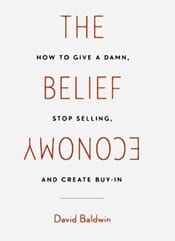This week in SBM-1, students had the opportunity to learn from Kayla Griffis, an alumnus from both our Digital Media Strategy undergraduate track and our M.A. in Advertising program. Kayla now serves as a Sr. Experience Strategist at RAPP, where she translates cultural understanding and consumer insight into impactful brand strategies.
Kayla broke down how strong insights go beyond surface-level observations – they reveal motivations, tensions, and cultural shifts that can guide smarter, long-term strategic decisions. To demonstrate this, she walked students through powerful examples from Nike, Old Spice, Arm & Hammer, and Subaru, highlighting how each brand used insight-driven thinking to reshape perception and behavior.
Students also got a behind-the-scenes look at a strategic brief Kayla developed for “Beyond Meat”, showing how insights evolve from research findings into clear, inspiring strategic direction for creative teams.
Before closing, Kayla emphasized the importance of continually strengthening cultural awareness as a future advertiser, it is important to stay curious, observant, and engaged with the world around you.
Want to sharpen your cultural radar as a future advertiser?
Kayla Griffis’ newsletter Culturally Curious delivers quick, insightful takes on the trends shaping consumer behavior and how brands can authentically connect with them.
Why check it out?
- Spot emerging cultural shifts before and after they hit mainstream.
- Learn how brands can translate culture into campaigns.
- Gain an edge in class projects, internships, and beyond.
Subscribe here: https://culturallycurious.substack.com/















